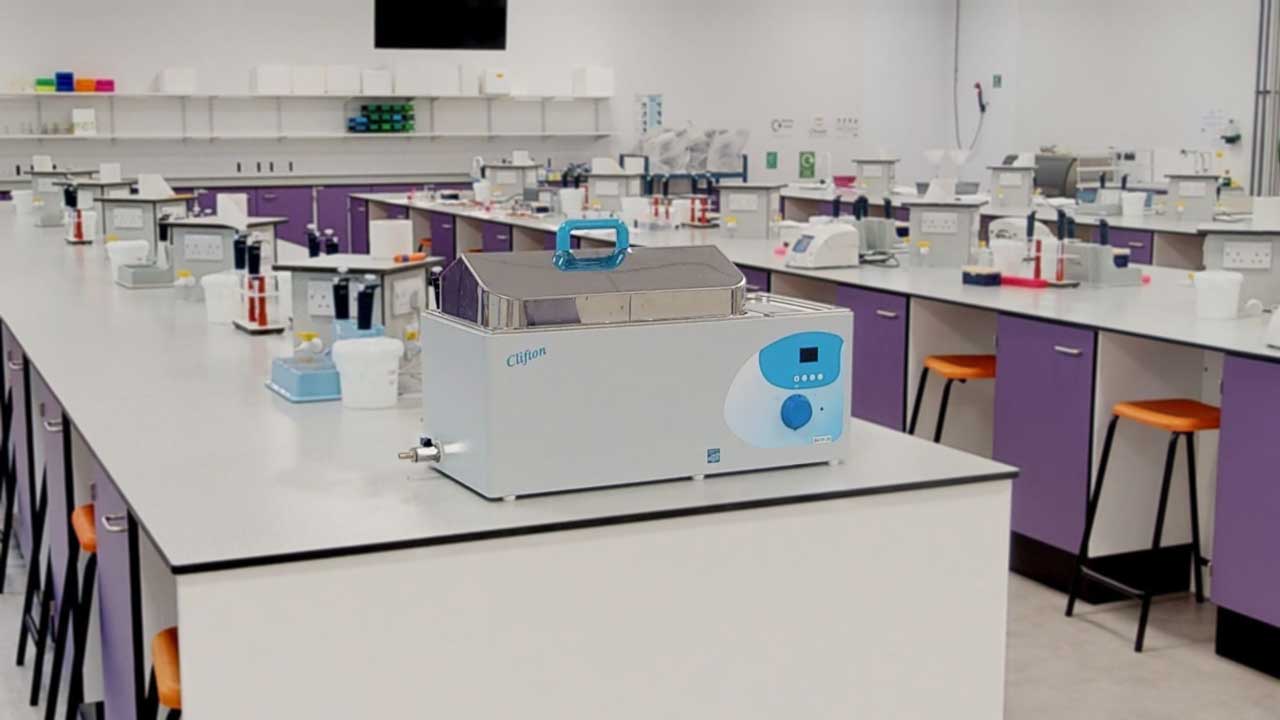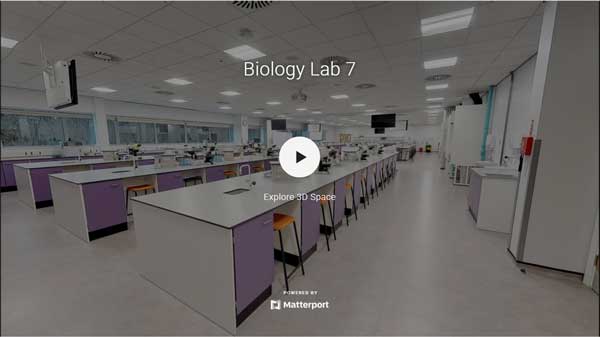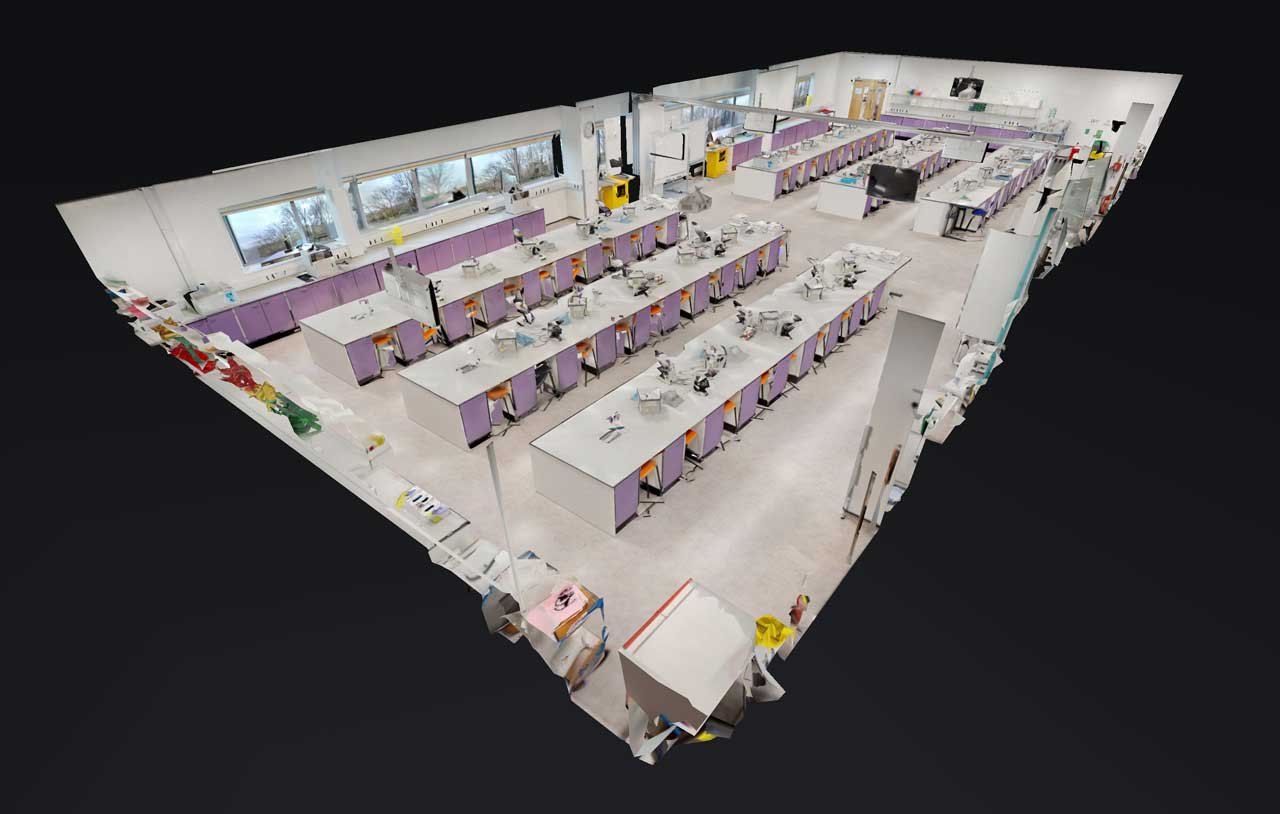
Biology lab tour
This tour of one or our modern, dedicated laboratories shows a typical range of lab equipment and facilities that you'll use on your Biology course.
You can also access an interactive version of the tour. Please note that the interactive tour is not suitable for use with assistive technologies.
Introduction
Our lab technicians have set out some typical equipment you might expect to use in a first year lab.
- Agarose gel tank (Agarose gel electrophoresis)
- Automatic pipettes (or air displacement pipettes)
- AV screen
- Compound microscope
- Dissecting microscope (or stereo microscope)
- Fumehood
- Gel imaging system (or gel doc)
- Ice machine
- Laboratory centrifuge
- Light box (transilluminator)
- Microfuge (bench top centrifuge)
- Oven (hot box oven)
- Rocker plate
- Water bath
Agarose gel tank (Agarose gel electrophoresis)
Gel electrophoresis is widely used in biochemistry, molecular biology and genetics to separate DNA on a matrix of agarose. The DNA is separated by size using an electric field to move the charged molecules through an agarose matrix.
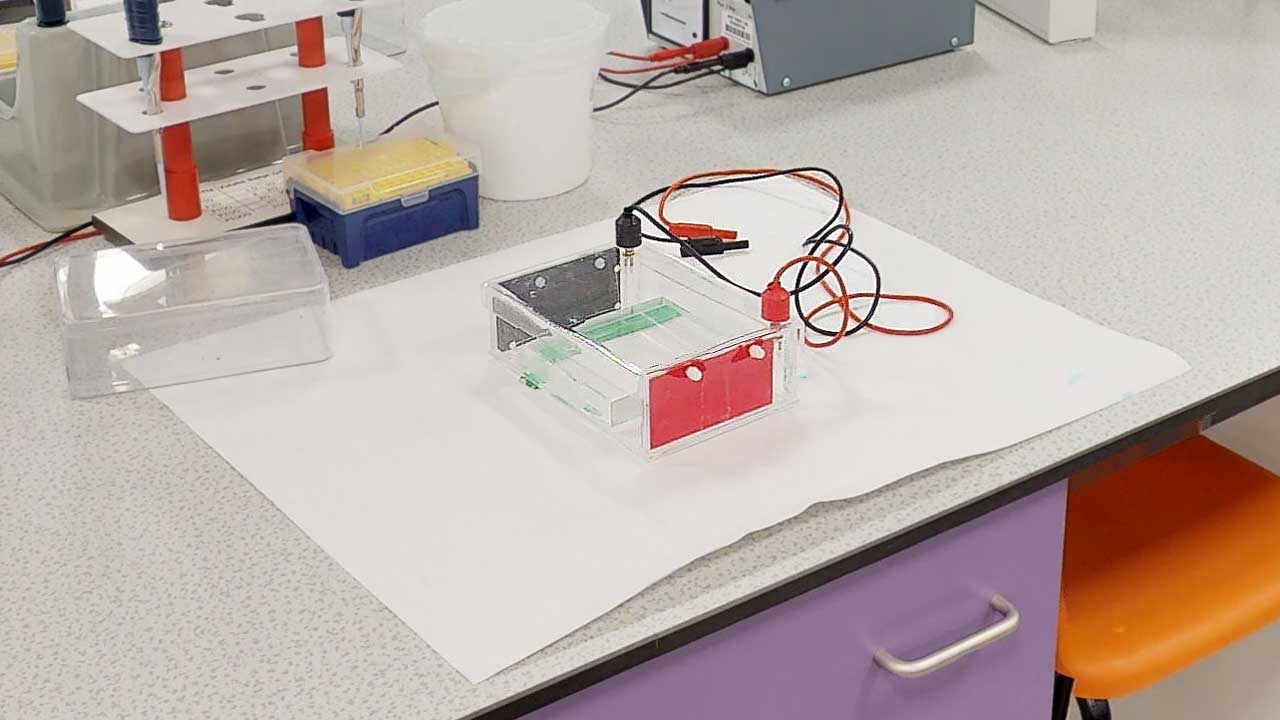
Automatic pipettes (or air displacement pipettes)
Adjustable micropipettes that deliver a measured volume of liquid. These vary in size (usually between 1 µl to 1000 µl). The pipettes have disposable tips that are change on each use. These pipettes are capable of being very precise and accurate.
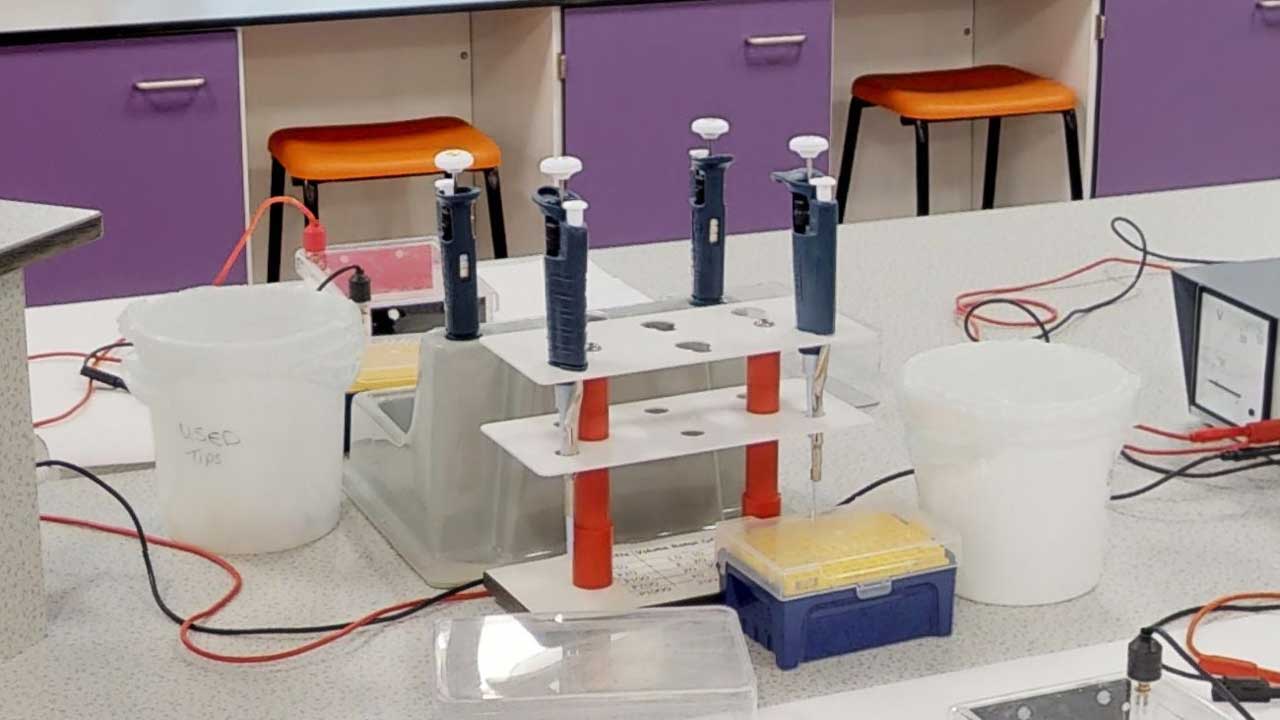
AV screen
Screens on which the person running the class can project information or show the class how to do something.
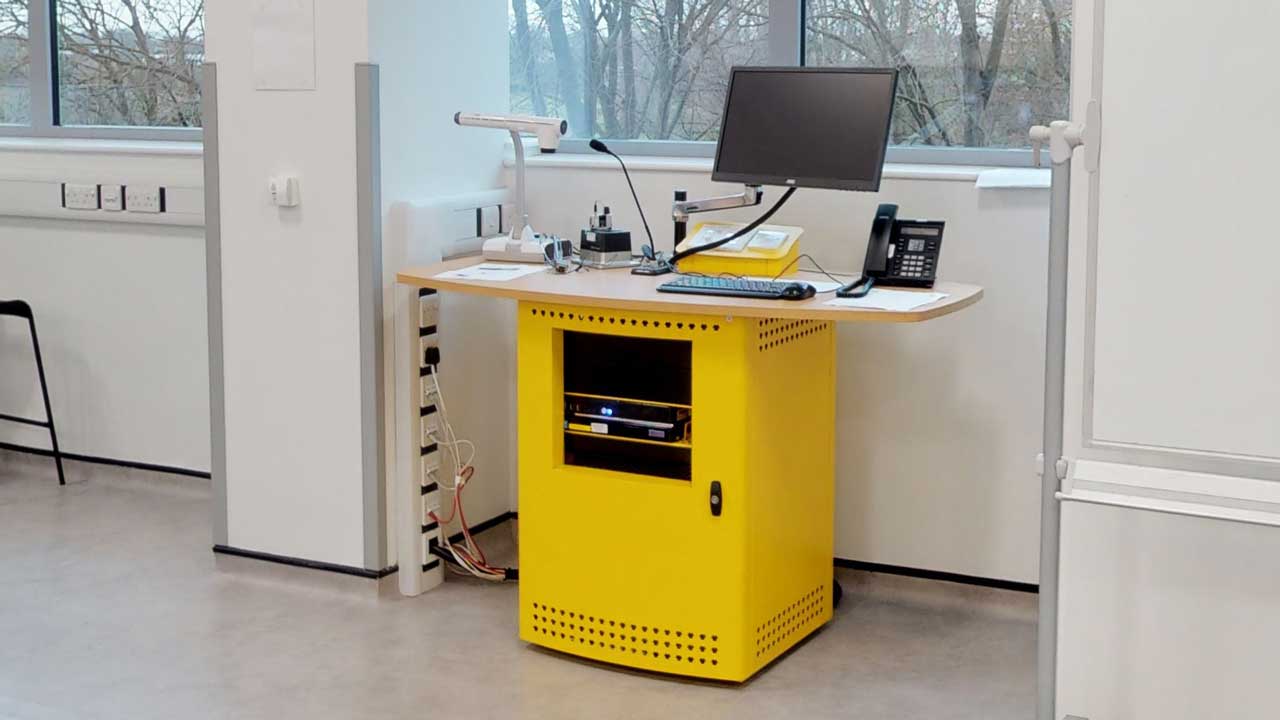
Compound microscope
High power light microscopes used to magnify images of samples using transmitted light. Capable of between 40 and 1000 times magnification. These microscopes are also fitted with phase contrast which improves contrast in difficult to see samples.

Dissecting microscope (or stereo microscope)
A dissecting microscope is microscope used for low magnification observation of a samples using reflected light. The microscope is used to look at the surfaces of specimens or to carry out manipulation of small samples.
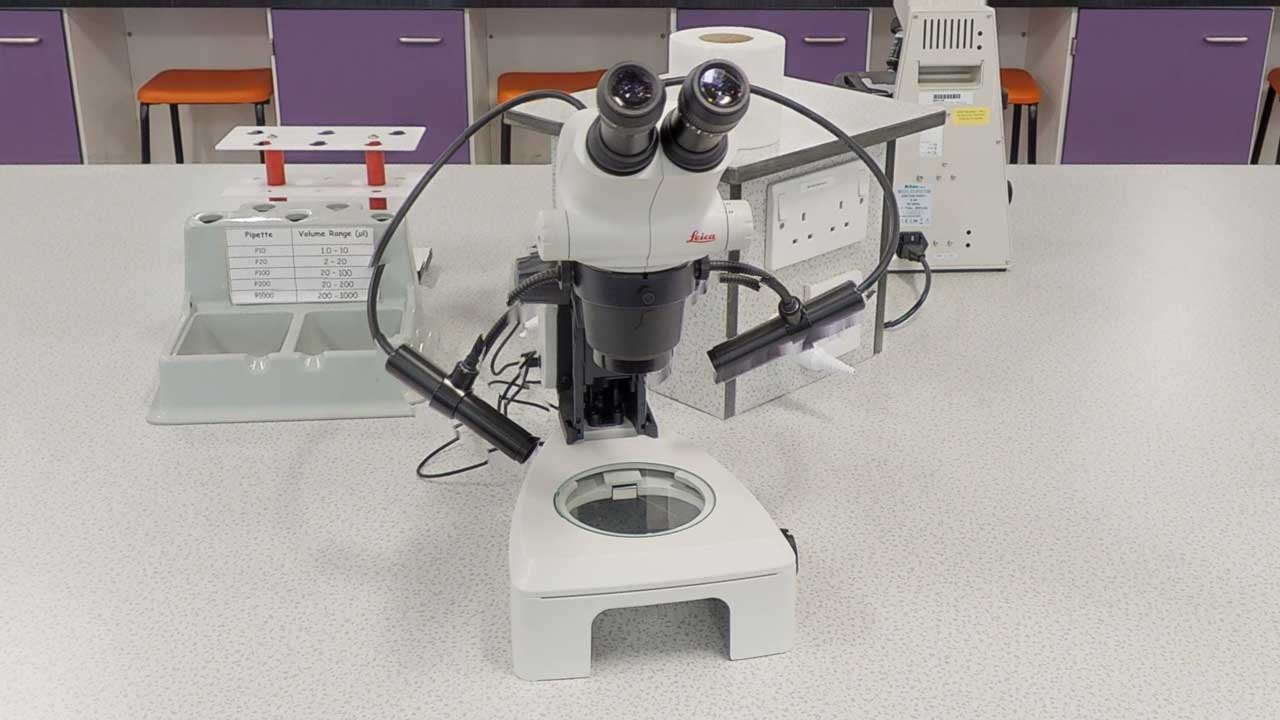
Fumehood
A ducted fume hood that draws air in from the front side of the cabinet, and vents to outside the building. It is used to protect the user from inhaling toxic materials.
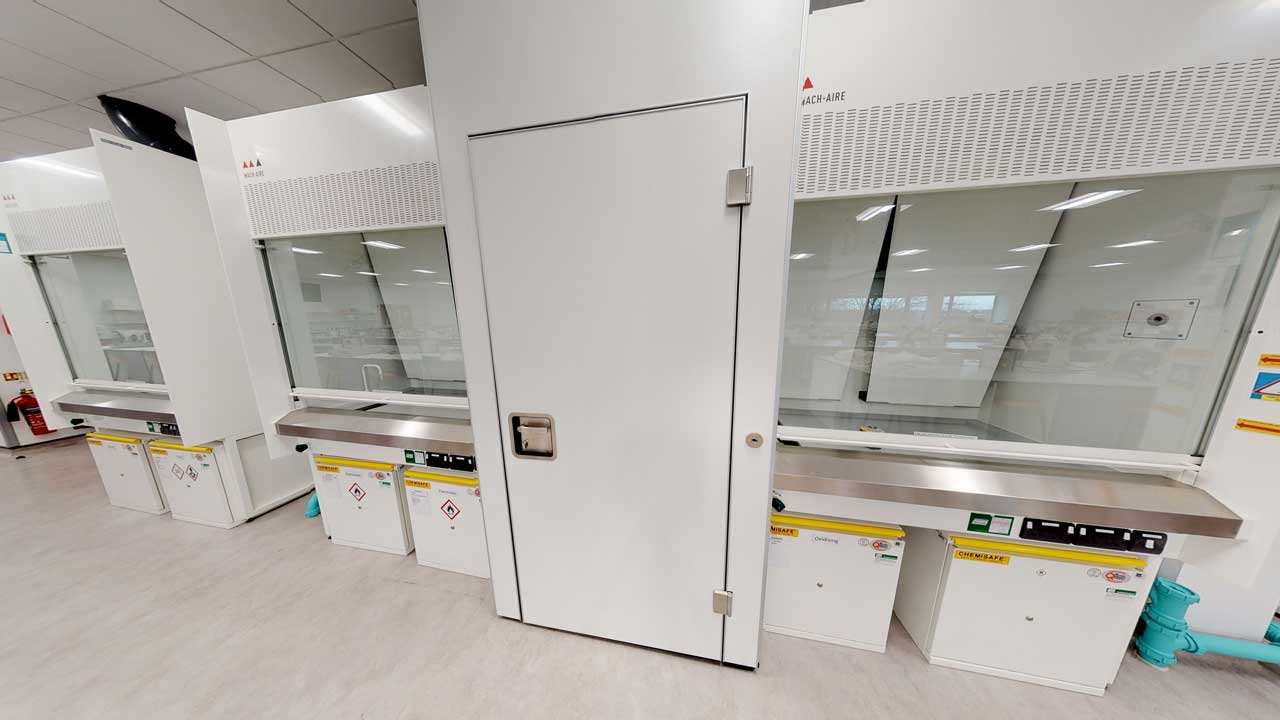
Gel imaging system (or gel doc)
Gel docs are used in molecular biology for the imaging nucleic acids or proteins within gels. Gels are stained with chemical that bind to the nucleic acids or proteins. The gel doc includes an ultraviolet (UV) light. Gels are placed inside and the door closed to stop light getting in / protect the user from the UV light. There is a camera for image capture and this image can either be printed or transferred electronically.
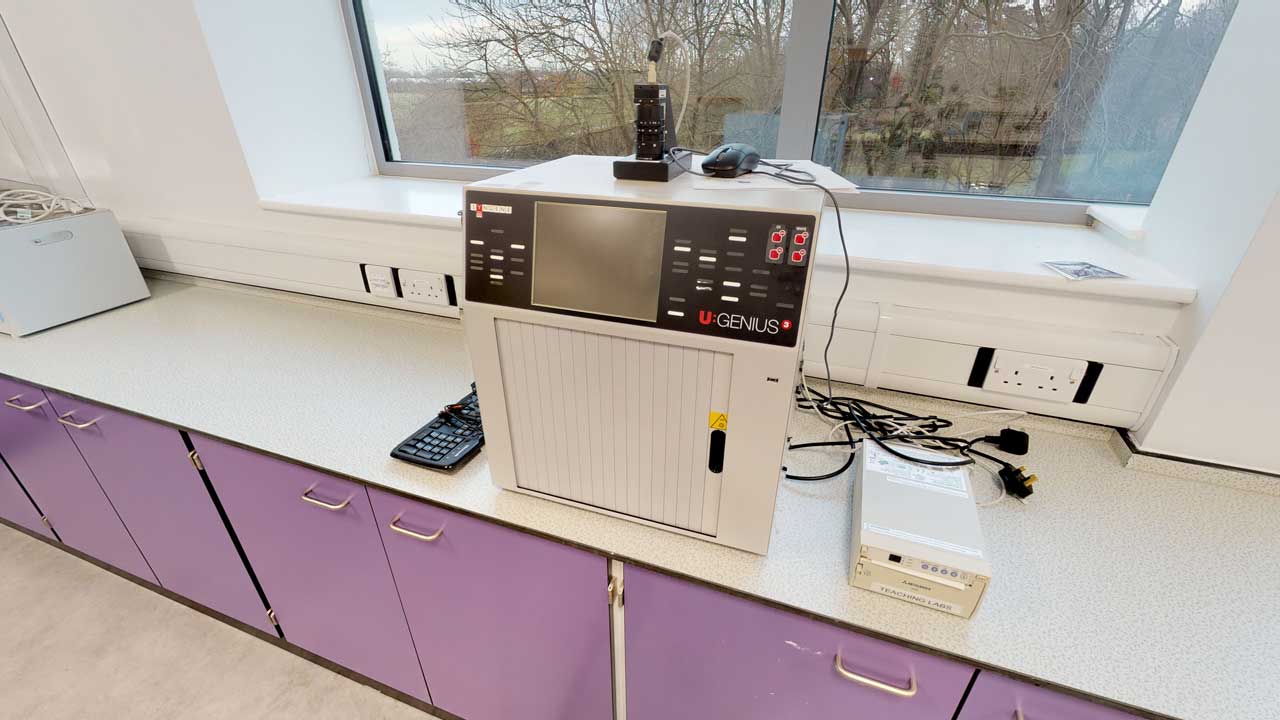
Ice machine
Commercial ice making machine used to generate large quantities of ice used for keeping samples cold during experiments.
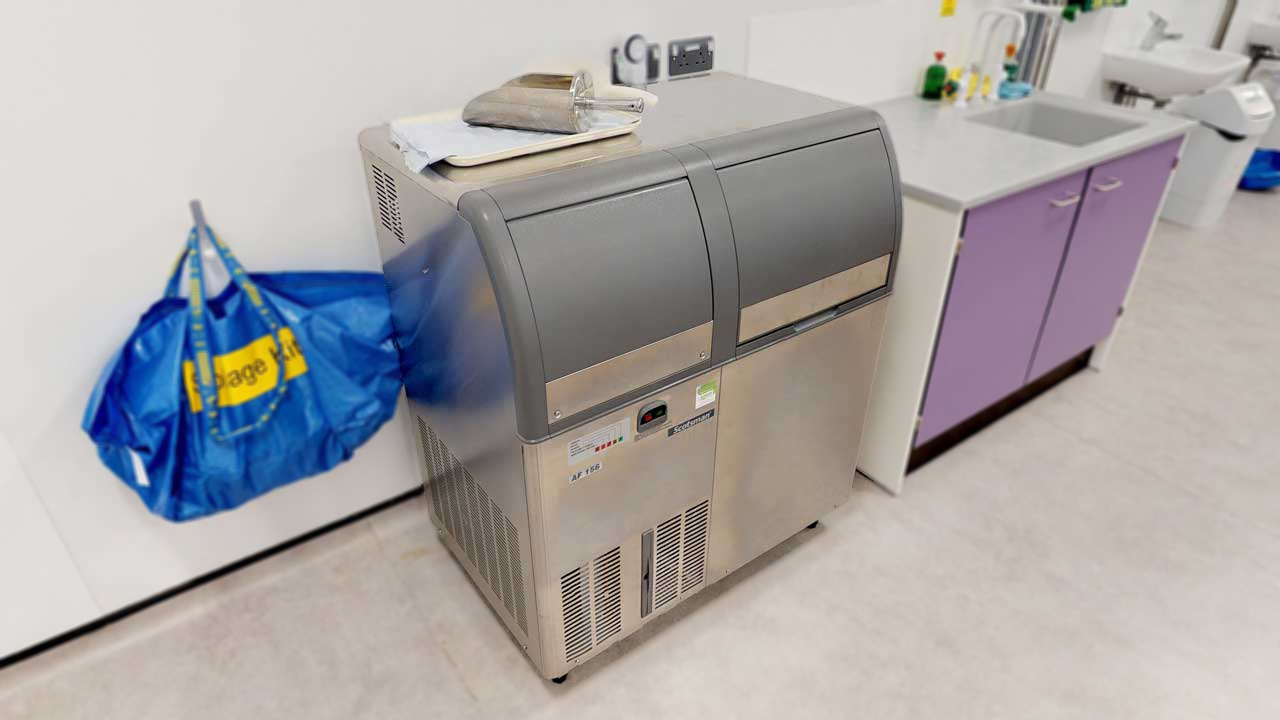
Laboratory centrifuge
Used to spin samples in order to separate materials based on their density. The denser particles settle out at the bottom of the tube.
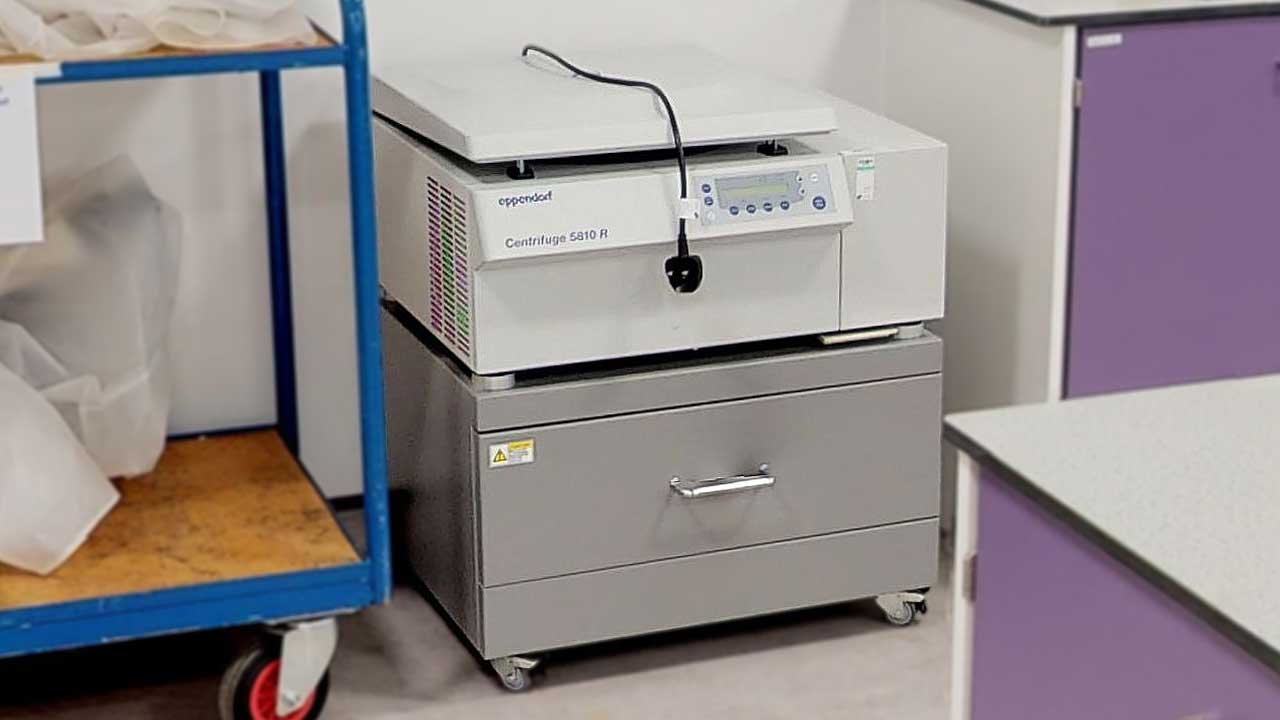
Light box (transilluminator)
Used to illuminate samples (usually gels) by transmission of light through the sample. Compounds within the sample can be seen (usually bands on a gel).
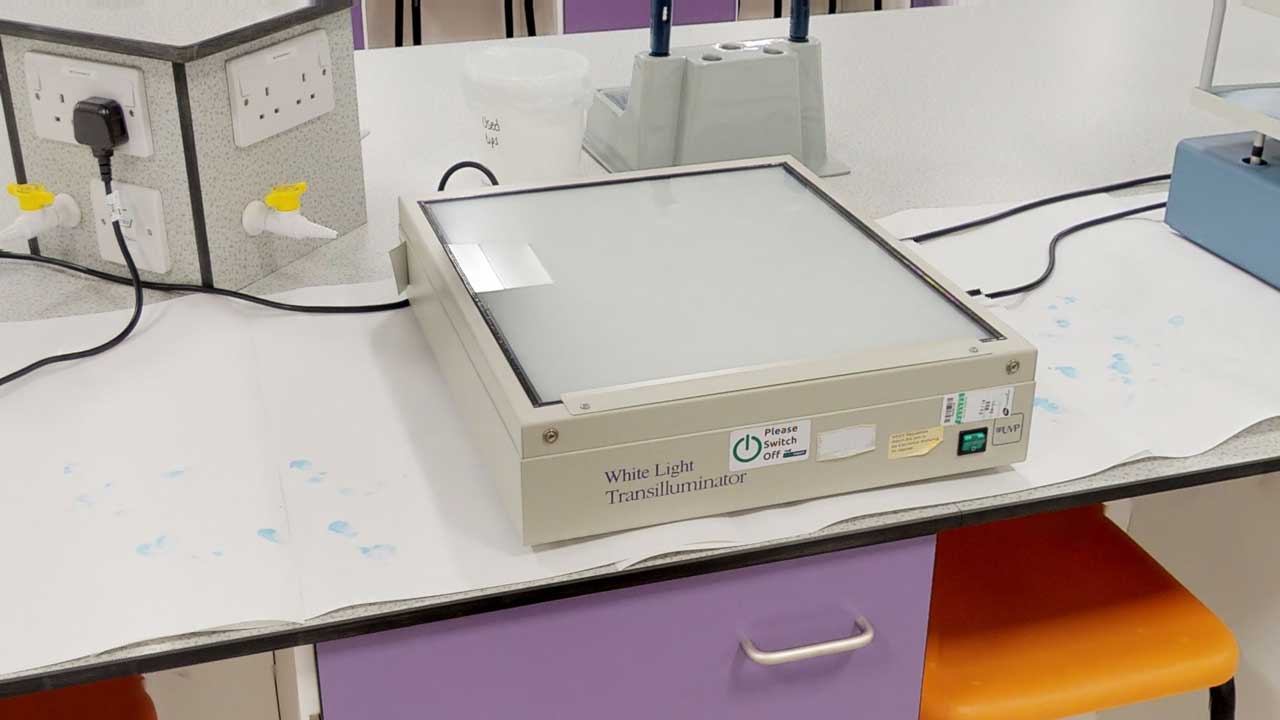
Microfuge (bench top centrifuge)
Used to spin samples in order to separate materials based on their density. The denser particles settle out at the bottom of the tube.
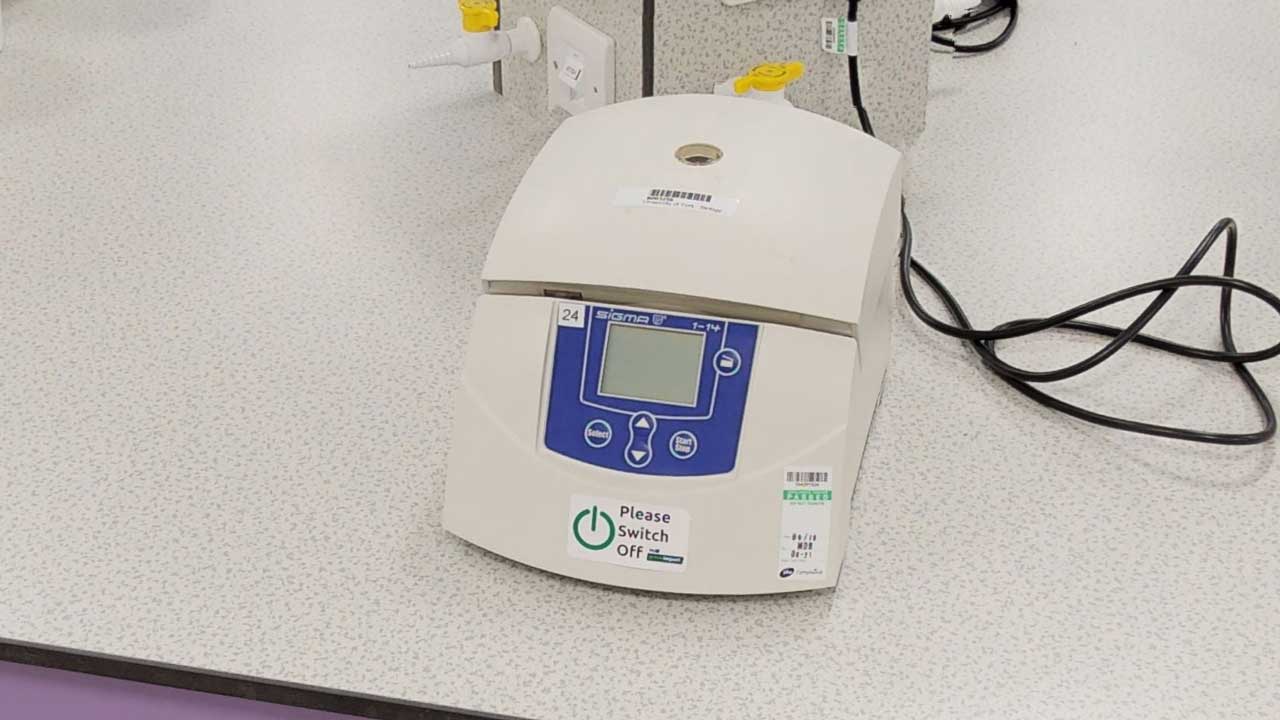
Oven (hot box oven)
An oven that can be set to a range of temperatures (ambient to about 90°C). Used to incubate living cells at an appropriate temperature or to keep reagents warm prior to use.
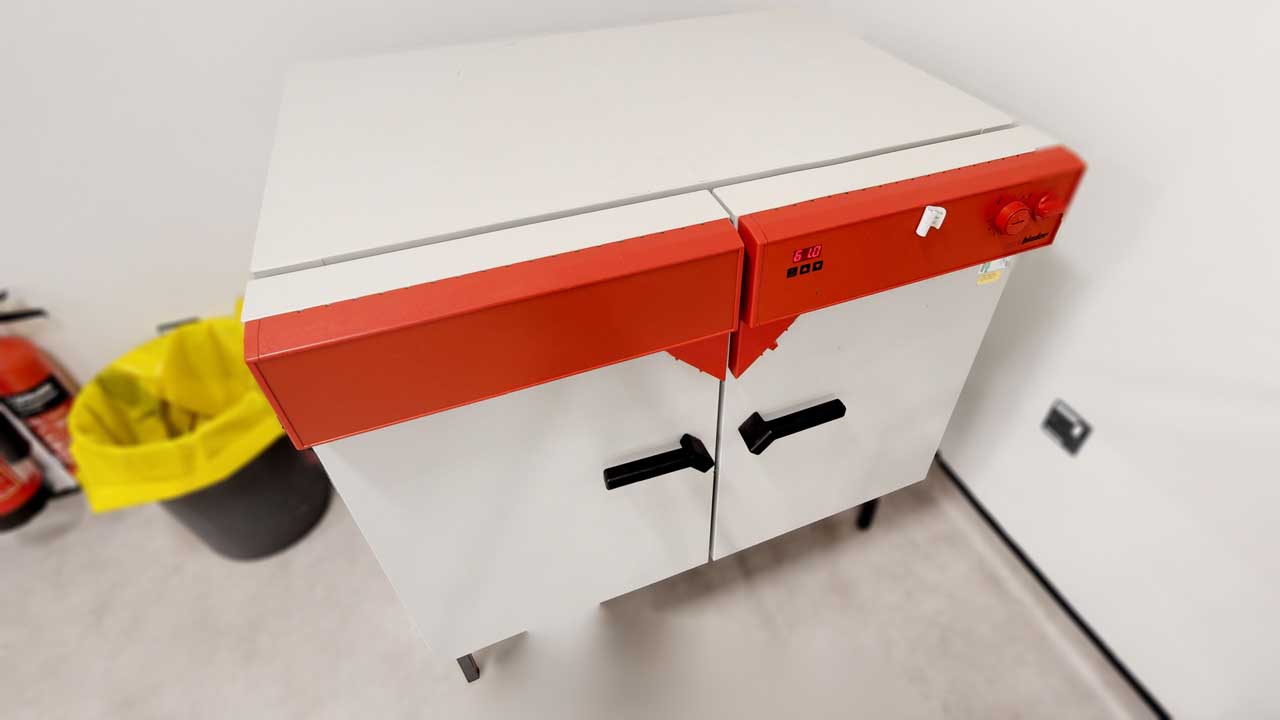
Rocker plate
Used to gently rock vessels containing liquids allowing contact between the liquid and something that is in them. Used for staining agarose gels.
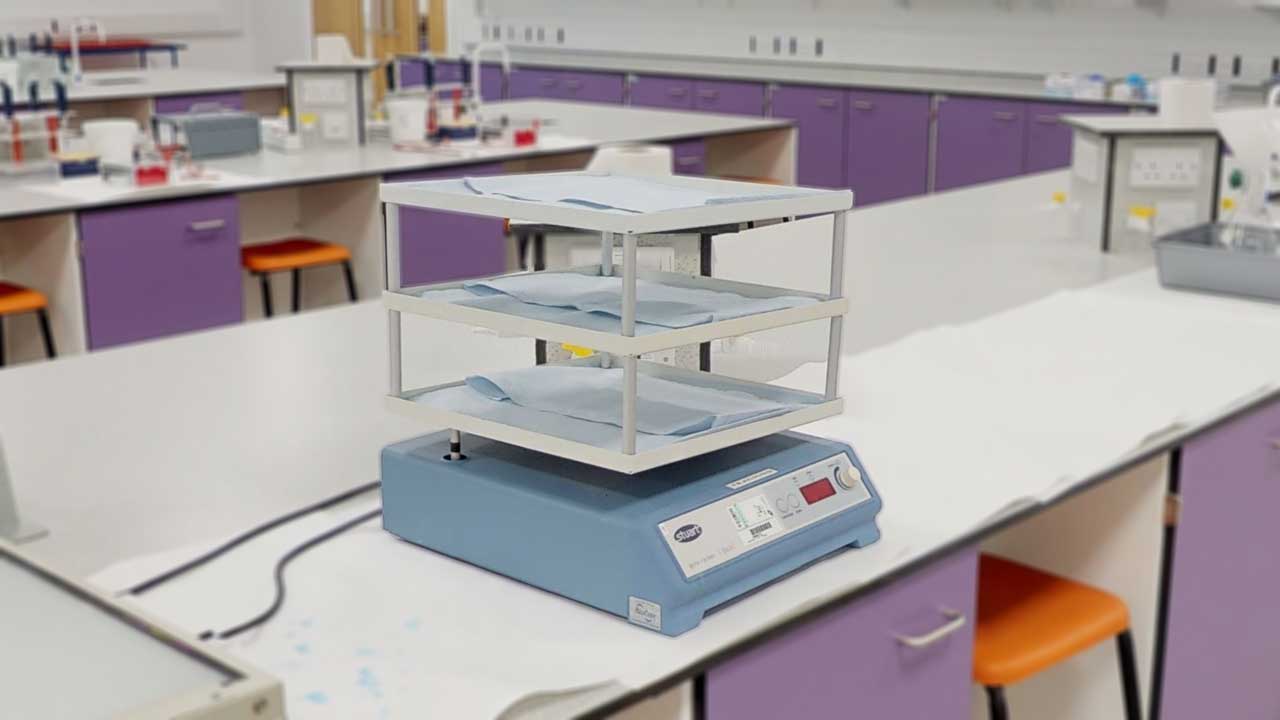
Water bath
Used to incubate samples in water at a constant temperature Can be set to a range of temperatures and can also agitate samples if required.
